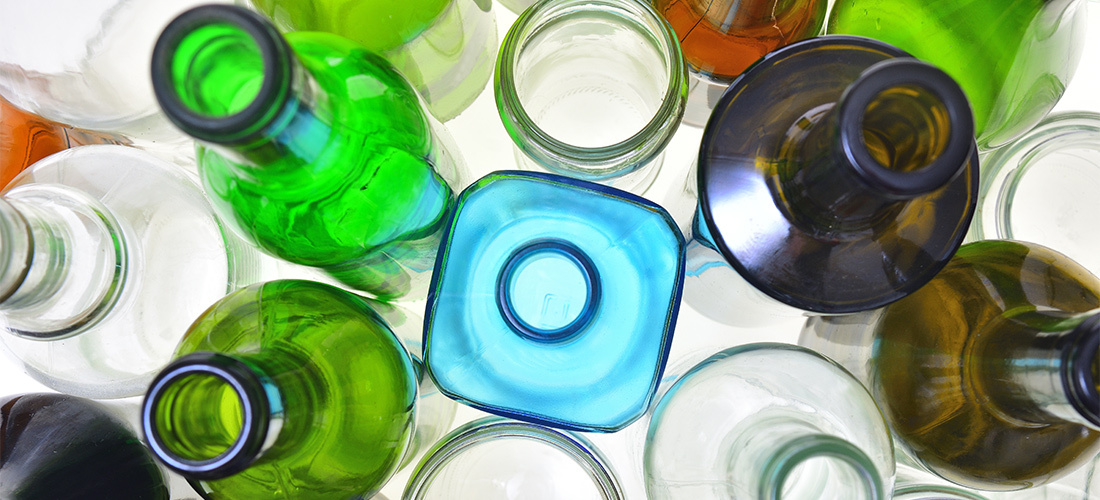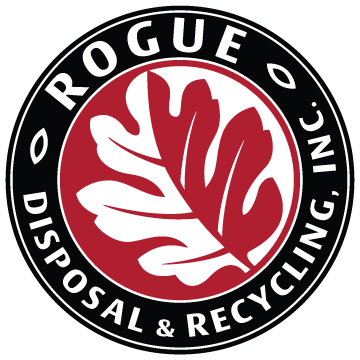Recycling Right: Understanding why glass can’t go in the commingled recycling cart

The good news? Glass jars and bottles used for food (like pickles, jam and spaghetti sauce) and beverages (like beer and wine) are 100% recyclable. According to the nonprofit Recycle Across America, when recycled properly, glass can be recycled indefinitely without degrading its quality. What’s more, the Glass Packaging Institute says that recycled glass provides 95% of the materials needed to make new glass.
The bad news? In order for any of that to work, glass has to be kept completely out of the curbside recycling stream. If it’s mixed in with other recyclable materials, not only will the glass end up in the landfill, but the other recyclables will too.
What is commingled recycling
Commingled recycling (also known as single-stream recycling) is a system in which all recyclables are mixed together in a single cart for recycling, and are then picked up by a recycling truck. The thought was that by making it as easy as possible, more people would embrace recycling. And they did! Unfortunately, the concept of commingled recycling and the day-to-day reality of commingled recycling are not the same — and glass is causing a big problem.
How the curbside recycling stream works
Every day, millions of people toss recyclable materials into their curbside recycling carts —things like tin cans, cardboard, milk jugs and newspaper. But when glass goes into the cart, and then gets picked up and dumped into the recycling collection truck and handled at a transfer station, it breaks — some into sharp-edged shards, some ground down into tiny fragments.
Following curbside collection, recycled materials at a transfer station are baled and sent to a material recovery facility (MRF). Here, the materials are placed on large conveyor belts. High-tech machinery and human workers do their best to pull contaminants out of millions of materials as they go quickly past on the conveyor belt. Glass, because of its vulnerability to breakage, contaminates any loads it’s in, making the entire load unusable. Those glass fragments embed themselves into more valuable recyclables, like cardboard and paper, and paper recyclers won’t accept glass contamination in their fiber. What’s more, glass shards can injure workers and damage the recycling machinery.
According to the United States Environmental Protection Agency, of the over 12 million tons of glass containers used by U.S. consumers in 2018 (the most recent year data was available), only 3 million tons were recycled. Some of the glass not recycled was combusted to produce energy. But the bulk of it ended up in landfills.
You can recycle glass — just not in the recycling stream with other materials
Here in the Rogue Valley, there are three ways you can recycle glass.
- You can drop off glass bottles and jars — any color, up to one gallon in size (no lids, please) — at any Rogue Disposal & Recycling glass drop-off depot. You’ll find them in the parking lots at several local businesses throughout the area. By collecting glass by itself, we will be able to reuse the glass in a beneficial and environmentally responsible way.
- You can drop off your rinsed-out glass bottles and jars at the Transfer Station in White City. Glass can be any color with sizes up to one gallon. Lids are not accepted, but labels are OK.
- And you can return your Bottle Bill eligible glass beverage bottles — and get your 10¢ deposits refunded — at the Medford BottleDrop Center. You can also return plastic and aluminum containers for soft drinks, beer and water, as well as coffee and tea drinks, energy and sports drinks, fruit juices and coconut water.
Thank you for recycling right!
Statistically, the states with deposit laws — including Oregon — recycle at a rate much higher than that of states without the laws. In Oregon, ever since the Bottle Bill increased the deposit amount (and refund) to 10¢, the recycling rate for glass has climbed to 88.5%. Recycling glass works. It takes everyone working together to be extra vigilant about keeping it separated and taking it to designated drop-off locations — NOT putting it in the recycling roll cart. Single-stream recycling works well for many materials. But not glass.
A few years ago, Rogue Disposal & Recycling adopted a list of specific items that CAN go into our red-lid recycling carts. This includes corrugated cardboard, tin and aluminum cans, plastic milk jugs (and similar #1 and #2 plastics where the neck of the bottle is smaller than the base) and newspaper. Thanks to your continued efforts and vigilance, we’ve been able to find domestic markets for all the materials we collect. Keeping glass out of the commingled cart helps us keep the stream clean so other materials can be recycled.
Share This
